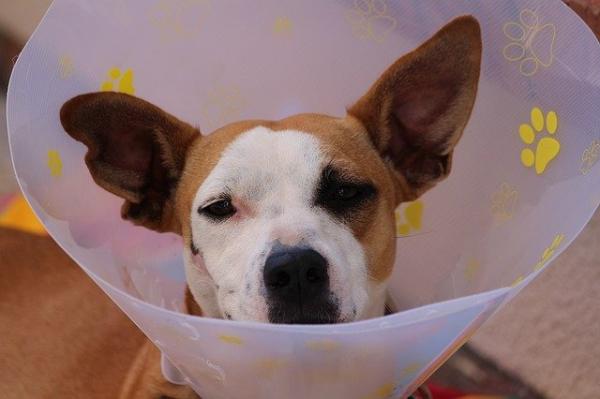Many people consider their pets a part of the family and would do anything to make sure they are healthy and are able to live a long, happy life. Animals can have medical conditions that are very similar to human illness and disease. Unfortunately, when pets get sick, they aren’t able to tell you themselves. That’s why people rely on their own instincts and routine veterinary checkups to treat any potential illnesses. Through veterinary medicine and science, animals can rely on medical procedures made possible by professional veterinarians with the help of medical grade gases like oxygen and nitrogen.
In veterinary clinics as well as other medical facilities like hospitals, having high quality performance tools is crucial, especially when in the hands of a surgeon. Common gases used to power surgical tools consist of compressed air or nitrogen.
In clinics or hospitals where there is no instrument air available or don’t have air compressors or the proper piping lines, nitrogen gas is used to drive surgical tools instead. Instrument air is essentially purified compressed air and is very similar to nitrogen in pressure, dryness and cleanliness. Air or gas cleanliness is very important when using it to power surgical tools as the air that flows through can be used to clean open wounds during surgery.
Aside from driving medical tools, nitrogen plays the main role in cryosurgery, which is used to treat skin conditions and cancers. For pets, this type of surgery is commonly used to treat tumors or lesions where the animal is constantly biting, licking or scratching. Many times cryosurgery is used to treat tumors that are found in places that are hard to reach.
Cryosurgery is most commonly performed using liquid nitrogen, which is a couple hundred degrees below zero. This process freezes tissue instantly and easily removes warts, small cysts, and other skin tags. Due to the fact that cryosurgery can be very painful, depending on the area that is being treated, it is almost always performed under anesthesia.
Cryo Chambers are also a great way to treat older patients that are too high of a risk for surgery. The sub-zero temperatures include the use of large quantities of liquid nitrogen which help initiate blood flow to promote healing. Some of the conditions cryo chamber therapy is useful for include inflammation, joint pain and skin disorders.
It can be difficult to keep a pet-patient still during exams and procedures which is one of the reasons why anesthesia comes in handy in veterinary clinics. The same way we wouldn’t want to feel any pain during surgery or other treatments is the same with our pets. Pet owners want to make sure their loved ones are as comfortable as possible.
Anesthetic machines essentially act as an oxygen source for the patient during procedures. The machine ensures that the patient is getting enough oxygen flow and ventilation along with the actual anesthetic that is administered. The general process consists of oxygen flowing through a vaporizer which then picks up the anesthetic gases which flow through the tubing and into the lungs of the patient as they breathe.
Supplemental Oxygen & Hyperbaric Oxygen Therapy
Oxygen gas will always be a crucial gas to have in a medical setting as it’s used for many respiratory conditions and to help stabilize patients. Just like humans, animals can develop illnesses and diseases that can limit the amount of oxygen their lungs are getting.
Although oxygen is vital for breathing, too much of it can cause oxygen toxicity if exposed to high concentrations over several days. That is why it’s important for vets to fully evaluate and understand the underlying cause of illness in the patient. In the short term, supplemental oxygen can be used to temporarily keep a patient comfortable until further tests are administered.
For illnesses that do require higher levels of oxygen, Hyperbaric Oxygen Therapy (HBOT) can be used for pet-patients. Hyperbaric oxygen therapy involves the use of an airtight chamber where the patient is placed in for treatment. The chambers come with liquid oxygen tanks and pressure tubes. This allows veterinarians to actively monitor the pressure and oxygen levels in the chamber. Treatment usually lasts about 1 to 2 hours and is generally performed twice a day for several days. Body temperature is also regularly checked to ensure that oxygen toxicity does not occur.
Hyperbaric oxygen therapy can be very beneficial to pet-patients with varying conditions. Some of the most common conditions treated with hyperbaric oxygen therapy consist of anemia, pneumonia, done infections, and congestive heart failure. It has also been used to treat swelling and speed up healing as a post-operative therapy.
Medical Oxygen & Nitrogen Supply
We love all animals here at Wagner Welding Supply. That’s why we work with local veterinary clinics and hospitals to ensure they are supplied with the highest quality gases. In fact, we serve our veterinary clients with the same quality and gas level purities that we supply our medical clients with. Whether you have hands or paws, our customers can rely on us to supply them with the quality gases needed to treat patients and save lives. We offer local next business day delivery in the Longmont and surrounding areas. Call today for a free quote or schedule a gas delivery to your veterinary clinic.
Sources:
https://tuttnauer.com/blog/veterinary-equipment-what-you-need-when-setting-clinic
https://vcahospitals.com/know-your-pet/cryosurgery-in-dogs
https://www.chthealthcare.com/blog/5-common-med-gas
https://avveterinarycenter.com/hyperbaric-oxygen-therapy-dogs/

